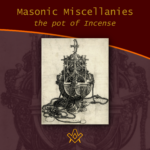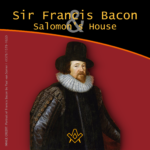Welcome to the October issue of The Square
The season has turned in more ways than one. I refer not only to the yearly change from summer to autumn, but of course to the passing of the Golden Era of the reign of Her Majesty Queen Elizabeth II.
For millions of people in the UK, the Commonwealth, and across the globe, the Queen’s death was something we had been expecting, but was ultimately still a shock.
For 70 years, this remarkable woman had given unswerving service to her people; her duty unshakable, and her faith in her country and God immovable.
The only monarch many of us had known, this formidable, yet deeply caring and deliciously witty lady, reminded us invariably of a fond aunt or grandmother.
A woman who sacrificed a ‘normal’ life for that of the sacred duty of monarchy; a life shrouded in service, discipline, and ancient ritual.
These rituals on occasion we were privy to witness: her ascension, coronation and ultimately at her funeral.
At the age of 25, on the sad occasion of the untimely death of her father King George VI, she was symbolically elevated from earthly princess to divinely appointed monarch.
In the past, concepts of royalty, coronation and deity were often inexorably linked and in the UK, we still honour these ancient origins – the premise that kingship is divinely conferred.
This form of king-making ritual dates as far back as the ancient Egyptians, and later throughout Judaism and Christianity.
Medieval coronations in Europe and particularly those witnessed in the British Isles, have their roots in the ceremonies of the Roman Emperors influenced by biblical accounts of anointing and crowning kings, and also rites descending from Byzantium, Visigothic Spain, and Carolingian France.
Just as Freemasonry incorporates ritual to impart an emotional, spiritual or moral lesson, so do the rituals that envelop the monarchy.
In the ascension and coronation we see the monarch being initiated into their kingship – the handing over of the regalia of power and reminders of their duty to God and country.
Their reign incorporates everything that has been learnt and what is still to be mastered – their ongoing input, and defence of the realm.
Ultimately, their funeral reminds us during the committal ritual where the crown, orb and sceptre are removed from the coffin, that they are just a ‘simple Christian soul’ delivered once more into the hands of God.
In the evening following her Coronation on 2 June 1953, The Queen made a broadcast. In it she reflected on the events of the day and thanked the public for their support, promising to serve the nation.
In this speech she expounds many of the qualities of Freemasonry – equality, tolerance and brotherly love.
Although not involved in Freemasonry herself, many members of her family were, and still are, active members.
Her father was a devoted Christian and Freemason. He would no doubt have imparted some of his Masonic learning to her – most notably the premise that beneath everything we are all equal – on the level.

When I spoke to you last, at Christmas, I asked you all, whatever your religion, to pray for me on the day of my Coronation – to pray that God would give me wisdom and strength to carry out the promises that I should then be making.
Throughout this memorable day I have been uplifted and sustained by the knowledge that your thoughts and prayers were with me. I have been aware all the time that my peoples, spread far and wide throughout every continent and ocean in the world, were united to support me in the task to which I have now been dedicated with such solemnity.
Many thousands of you came to London from all parts of the Commonwealth and Empire to join in the ceremony, but I have been conscious too of the millions of others who have shared in it by means of wireless or television in their homes. All of you, near or far, have been united in one purpose. It is hard for me to find words in which to tell you of the strength which this knowledge has given me.
The ceremonies you have seen today are ancient, and some of their origins are veiled in the mists of the past. But their spirit and their meaning shine through the ages never, perhaps, more brightly than now. I have in sincerity pledged myself to your service, as so many of you are pledged to mine.
Throughout all my life and with all my heart I shall strive to be worthy of your trust.
In this resolve I have my husband to support me. He shares all my ideals and all my affection for you. Then, although my experience is so short and my task so new, I have in my parents and grandparents an example which I can follow with certainty and with confidence.
There is also this. I have behind me not only the splendid traditions and the annals of more than a thousand years but the living strength and majesty of the Commonwealth and Empire; of societies old and new; of lands and races different in history and origins but all, by God’s Will, united in spirit and in aim.
Therefore I am sure that this, my Coronation, is not the symbol of a power and a splendour that are gone but a declaration of our hopes for the future, and for the years I may, by God’s Grace and Mercy, be given to reign and serve you as your Queen.
I have been speaking of the vast regions and varied peoples to whom I owe my duty but there has also sprung from our island home a theme of social and political thought which constitutes our message to the world and through the changing generations has found acceptance both within and far beyond my Realms.
Parliamentary institutions, with their free speech and respect for the rights of minorities, and the inspiration of a broad tolerance in thought and expression – all this we conceive to be a precious part of our way of life and outlook.
During recent centuries, this message has been sustained and invigorated by the immense contribution, in language, literature, and action, of the nations of our Commonwealth overseas. It gives expression, as I pray it always will, to living principles, as sacred to the Crown and Monarchy as to its many Parliaments and Peoples. I ask you now to cherish them – and practise them too; then we can go forward together in peace, seeking justice and freedom for all men.
As this day draws to its close, I know that my abiding memory of it will be, not only the solemnity and beauty of the ceremony, but the inspiration of your loyalty and affection. I thank you all from a full heart. God bless you all.

Royal cypher of Elizabeth II of the United Kingdom (top)
Signature of Elizabeth II, which features her regnal name (Elizabeth), followed by the letter R for Regina (Queen) (Bottom)
Text Source : A speech by The Queen on her Coronation Day, 1953
https://www.royal.uk/coronation-day-speech-2-june-1953
As a global nation, and as individuals – whatever our race, religion or creed – we thank you Ma’am for a life of service and devotion well done. May you rest in peace for eternity.
We now take this opportunity to say the unfamiliar but heartfelt words – God Save the King!
This month’s Editor picks:

A Royal Reflection – On the death of Her Majesty Queen Elizabeth II, Craig Weightman reflects on how the late Monarch’s life demonstrated how we should all live every moment, as we serve others. A poignant reflection on a life that was resplendent in virtue, to the benefit of all, which is what Freemasonry attempts to teach us.

Masonic Miscellanies – the Pot of Incense. Just when the pot of incense became an emblem of the third section of the Sublime Degree can not be stated with certainty. It is, apparently, an American invention or addition. But what does it symbolise?

The Perjured Freemason – Was Samuel Prichard a perjured individual, or simply a misguided Freemason? Read on and find out more!

Freemasonry in Popular Culture – Part 3 takes a look at some of the comic books and graphic novels that feature Freemasonry.

Extracts of Wisdom – from Craig Weightman’s book ‘A Journey in Stone’ – this month, we explore the ‘Illusion of the Self and the Truth of Interdependency’.

Eight Schools of Freemasonry p6: The Historical School – Robert Freke Gould viewed Freemasonry as a school of wisdom for Masons who utilised their time and effort to study the history of the Craft and its symbols. But it had to be ‘authentic’.

Kenneth Jack explores ‘Sir Francis Bacon and Salamon’s House’, who were the intriguing Rosicrucian brotherhood, and the House of Strangers!

Draško Miletić writes on ‘The State of Being’, his view that the spirit of the Renaissance is long gone and today’s globalized and hesitant man, no matter his ideology and confession, is the one that is deprived of resoluteness, of decision making, the one whose opinion doesn’t matter.

Paul Gardner offers a fascinating account of the very eccentric Dr William Price ‘A Son of Wales – a Mason?’

Matthew A. Leilech poses a very interesting question in ‘Two Perpendicular Parallel Lines’ – the point within a circle embordered by two perpendicular parallel lines, with the Holy Bible resting on the circle, is one of the most recognizable symbols in Freemasonry. It is also one which always raises a question. How can two lines be both perpendicular and parallel?

Alex Lishanin delves into the lair of ‘The Order of the Dragon – Societas Draconistarum’ – who were these ‘dragons’ and what were their origins?
As always, we also have the usual features of old books, new books, reviews of books, and a whole host of Masonic knowledge to keep you busy with your ‘daily advancement’.
We hope you enjoy this month’s issue. If you do – or if you don’t – drop me a line at editor@thesquaremagazine.com
Until next time, stay safe and well.

Article by: Philippa Lee. Editor

Philippa Lee (writes as Philippa Faulks) is the author of eight books, an editor and researcher.
Philippa was initiated into the Honourable Fraternity of Ancient Freemasons (HFAF) in 2014.
Her specialism is ancient Egypt, Freemasonry, comparative religions and social history. She has several books in progress on the subject of ancient and modern Egypt. Selection of Books Online at Amazon

